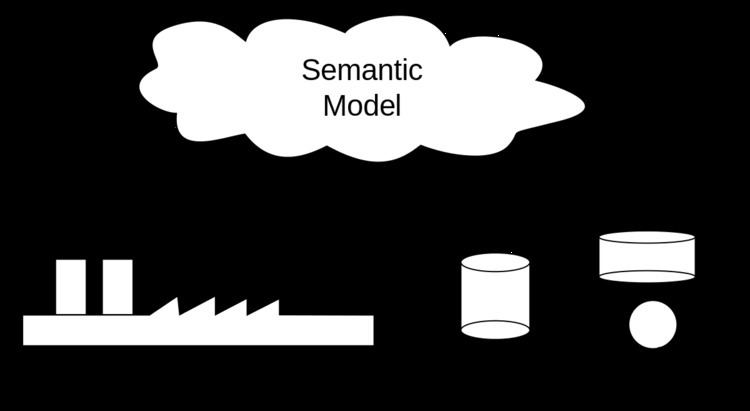 | ||
A semantic data model in software engineering has various meanings:
Contents
- It is a conceptual data model in which semantic information is included. This means that the model describes the meaning of its instances. Such a semantic data model is an abstraction that defines how the stored symbols (the instance data) relate to the real world.
- It is a conceptual data model that includes the capability to express information that enables parties to the information exchange to interpret meaning (semantics) from the instances, without the need to know the meta-model. Such semantic models are fact oriented (as opposed to object oriented). Facts are typically expressed by binary relations between data elements, whereas higher order relations are expressed as collections of binary relations. Typically binary relations have the form of triples: Object-RelationType-Object. For example: the Eiffel Tower <is located in> Paris.
Typically the instance data of semantic data models explicitly include the kinds of relationships between the various data elements, such as
Overview
The logical data structure of a database management system (DBMS), whether hierarchical, network, or relational, cannot totally satisfy the requirements for a conceptual definition of data, because it is limited in scope and biased toward the implementation strategy employed by the DBMS. Therefore, the need to define data from a conceptual view has led to the development of semantic data modeling techniques. That is, techniques to define the meaning of data within the context of its interrelationships with other data. As illustrated in the figure. The real world, in terms of resources, ideas, events, etc., are symbolically defined within physical data stores. A semantic data model is an abstraction which defines how the stored symbols relate to the real world. Thus, the model must be a true representation of the real world.
According to Klas and Schrefl (1995), the "overall goal of semantic data models is to capture more meaning of data by integrating relational concepts with more powerful abstraction concepts known from the Artificial Intelligence field. The idea is to provide high level modeling primitives as integral part of a data model in order to facilitate the representation of real world situations".
History
The need for semantic data models was first recognized by the U.S. Air Force in the mid-1970s as a result of the Integrated Computer-Aided Manufacturing (ICAM) Program. The objective of this program was to increase manufacturing productivity through the systematic application of computer technology. The ICAM Program identified a need for better analysis and communication techniques for people involved in improving manufacturing productivity. As a result, the ICAM Program developed a series of techniques known as the IDEF (ICAM Definition) Methods which included the following:
During the 1990s the application of semantic modelling techniques resulted in the semantic data models of the second kind. An example of such is the semantic data model that is standardised as ISO 15926-2 (2002), which is further developed into the semantic modelling language Gellish (2005). The definition of the Gellish language is documented in the form of a semantic data model. Gellish itself is a semantic modelling language, that can be used to create other semantic models. Those semantic models can be stored in Gellish Databases, being semantic databases.
Applications
A semantic data model can be used to serve many purposes. Some key objectives include:
